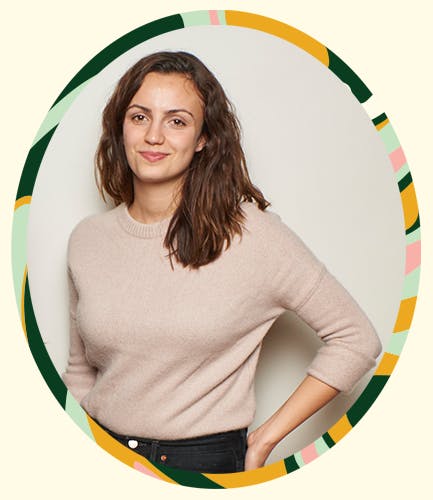Your basket
Your basket is currently empty.


£-1.00
£-1.00
A Year In Review
Share

A Year In Review
As Daye Turns 1, We Reflect On The Past 12 Months

Illustrations by
Erin Rommel
Date
13th September 2019
Along the way, I often felt as if I were driving a sports car at racing speed: taking my eyes off the road for even a second wasn’t an option.
Now that I am no longer a one woman band thanks to the amazing team we have at Daye, I’ve started to carve out time to reflect. From previous jobs and life experiences, I’ve learned how important reflection is, particularly in times of intense learning and lightning speed growth—so here’s looking back to the past 12 months, what went well, and what could have gone better.
Start with the praise
This is a lesson I learned from my friend and colleague Margarida—always start with positive feedback in performance reviews, which is kind of what I’m doing here.
Not just a branding play
Very early on into the company’s journey, we decided to fully vertically integrate our supply chain. We hadn’t launched a product to market, hadn’t received much user feedback outside of a clinical or pilot setting, yet we knew that in order to deliver on our promise to raise standards in women’s health, we’d have to take a deep breath, pinch our noses and dive into the deep end.
Investing in proprietary manufacturing is expensive, time consuming and inherently risky. We didn’t underestimate the risk, but rather saw it as an opportunity.
In order to be a successful direct to consumer brand you really have to own everything in your supply chain. You can’t just skim the surface and repackage someone else’s product.
Running the business on OKRs, 1:1s and an extensive weekly update
Even when the company consisted of only two people, running the business on OKRs (objectives and key results) meant we were forced to visualise the coming quarter in great detail. Setting OKRs always is like reverse engineering the best route to the end points you are chasing.
“
Taking my eyes off the road for even a second wasn’t an option.
OKRs take a lot of time, trial and error to master—and as a team, we are nowhere close to having the art of prioritisation perfected—so starting early in our company growth journey was key.
Today, we spend about a week a quarter actively thinking through what KPIs (key performance indicators) we want to set for the coming three months. Each new team member learns the importance of OKRs as part of their on-boarding process.
Held our own when it came to launch
Any founder worth their salt is delusionally optimistic about their business. We need a pair of rose-tinted glasses to overcome the uncertainty and risk we’re faced with everyday.
I’m delusionally optimistic about timelines—whether it’s how long it will take me to get to a meeting across town or how long it would take to engineer a new CBD coating machine, my default is to assume an impossible deadline can be met.
“
Any founder worth their salt is delusionally optimistic about their business.
Because of the completely unrealistic deadlines I set for our first product launch, the most frequently asked question outsiders had for Daye has been: “Why haven’t you launched yet?”
This was always uncomfortable to answer. We were under so much pressure from media, investors, friends, everyone and their mother, to launch NOW. This pressure could have resulted in us caving and launching a sub-par product. We didn’t. We took our time with launch and made sure that the first boxes to leave Daye HQ lived up to our mission statement: to raise the standards in women’s health.
V1, V2, V3
Daye exists in the highly complex intersection between clinical, regulatory, manufacturing, supply chain and brand. Building Daye often feels like building three businesses at the same time, and the best way we found to cope with the steep learning curve was to adopt an AB testing model to everything we do. Daye’s culture today is centered around structured experiments designed to fill very specific gaps in our understanding of various business challenges.
All of our operations today—from launch strategy, to machine building and software engineering—are based on V1 (first toe dip, first prototype, initial user learning), V2 (V1 improved based on user feedback and general learning), V3 (V2 built to scale).
What could have gone better
Triple timelines and costs
With innovation—whether it’s product or process—comes uncertainty, and with uncertainty come delays. Tripling your timelines increases the likelihood of delivering on your promise on time... or even early!
This is one of the biggest lessons I learned through experience at Daye (yes, it’s one of those pesky mindset changes that don’t come through from merely hearing other people’s advice—I needed to face the pain of missed deadlines myself to really learn).
“
Building Daye often feels like building three businesses at the same time.
Agencies are not a shortcut
Over summer 2018, I interviewed 20+ branding and e-commerce development agencies in London, Berlin, San Francisco, and Paris.
All of them were asked to submit competing bids for our business. I asked for extensive references from other founders and clients. Still, nothing could have prepared us for the experience that was working with agency 1, 2, 3 and 4. From mediocre concepts, to underwhelming designs, to outright financial fraud—the Daye team saw it all.
So let me repeat, agencies are not a shortcut. They will not save your business time or money.
The biggest lesson we learned with agencies, is that if you want to build a brand that’s genuinely differentiated, and genuinely thought through, you can’t outsource the hard work. Even the most talented and credible of agencies are used to following an out of the box template for their clients.
While agencies may be excited by your proposition today, tomorrow the next hot product will consume their attention and you will be yesterday’s news. The evolution of a brand is as important as its origin story and you can always tell when there’s been a cut-off between the two.

Finally, the most important lesson I personally learned over the past 12 months is:
Food for the turtles
Eiso, our board observer, lent me this philosophy. In order to solve the really complex, make it or break it challenges in my startup, I had to learn to let the insignificant (but ego-hurting) problems be food for the turtles.
I’d say my turtle is more than well fed by now, so here’s to 12 more challenging, fulfilling and exciting months.
—Valentina.
